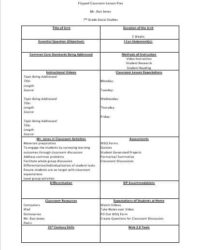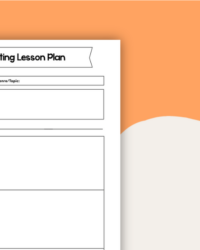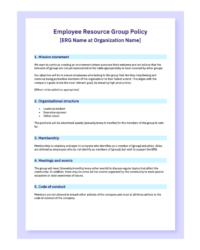Venturing into the world of flipped classrooms can feel like unlocking a new level in teaching. It’s a dynamic approach that transforms the traditional learning environment, moving direct instruction outside of the classroom and dedicating in-class time to interactive, collaborative activities. This shift often leads to deeper understanding, personalized learning experiences, and more engaged students, as they become active participants rather than passive listeners.
However, like any effective teaching strategy, success in a flipped classroom doesn’t happen by chance. It requires careful planning and a structured approach to ensure both the out-of-class and in-class components work seamlessly together. That’s where a solid lesson plan comes into play. A well-designed plan provides a clear roadmap, ensuring your students know what to expect and how to prepare, while also guiding your in-class facilitation.
Deconstructing the Flipped Classroom Model: Why a Template Matters
At its core, the flipped classroom model is about optimizing learning time. Instead of using valuable class minutes for lectures, that content is delivered beforehand, often through videos, readings, or interactive modules that students can access at their own pace. This frees up the face-to-face time for hands-on application, critical thinking, problem-solving, and personalized support. Imagine a classroom where every student is actively doing, discussing, and discovering, rather than just listening.
The benefits of this approach are manifold. Students gain greater control over their learning pace, able to pause, rewind, or re-read explanations as needed, which can be particularly helpful for diverse learners. Teachers, on the other hand, get more opportunities for individualized attention, fostering a truly differentiated learning environment. They can observe student struggles in real-time, offer targeted interventions, and facilitate richer discussions, turning the classroom into a dynamic hub of collaborative exploration.
However, without structure, the flipped model can quickly devolve into chaos. Students might not complete pre-class work, leading to unpreparedness, or in-class activities might lack purpose without a clear connection to the pre-class content. This is precisely why a well-thought-out lesson plan isn’t just helpful; it’s essential. It acts as the backbone, connecting all the pieces and ensuring a coherent learning journey for everyone involved.
A template provides a consistent framework, guiding educators through the process of outlining objectives, selecting appropriate content, designing engaging activities, and planning for assessment. It helps ensure that all critical elements are considered, from the technology used for pre-class delivery to the specific questions posed during in-class discussions. Having a go-to flipped classroom lesson plan template saves time and ensures consistency across units or even different courses.
Key Components of an Effective Flipped Classroom Lesson Plan
A robust template for a flipped classroom lesson plan will typically prompt you to consider several distinct phases of learning, ensuring a holistic approach.
- Pre-Class Learning Objectives: What should students know or be able to do *before* class?
- Pre-Class Content & Activities: Specific videos, readings, podcasts, or online exercises students must complete, along with instructions on how to submit proof of engagement (e.g., questions, short quiz).
- In-Class Learning Objectives: What will students know or be able to do *during* class?
- In-Class Activities: Detailed plans for group work, discussions, labs, project work, or problem-solving sessions, ensuring active engagement and application of pre-class knowledge.
- Differentiation Strategies: How will you support struggling learners and challenge advanced ones during in-class time?
- Assessment & Reflection: How will you check for understanding during and after class? What opportunities will students have to reflect on their learning?
- Materials & Technology: List all necessary resources, both for pre-class content delivery and in-class activities.
Tailoring Your Template to Your Subject
While the core components remain consistent, the specific execution within a flipped classroom lesson plan template will vary widely depending on the subject matter. For a math class, pre-class content might be video tutorials on new concepts, with in-class time dedicated to working through complex problems. In a literature class, students might read a text and watch a lecture on literary theory before class, using in-class time for Socratic seminars or creative writing responses.
Building Your Own Flipped Classroom Lesson Plan Template: A Step-by-Step Guide
Now that we understand the “why” and “what,” let’s dive into the “how” of constructing your very own flipped classroom lesson plan template. This isn’t about rigid adherence but rather about creating a flexible framework that empowers you to consistently deliver engaging and effective flipped learning experiences. Think of it as your personal blueprint for educational innovation.
Starting with clear learning objectives is paramount. Before you even think about content, define precisely what you want students to achieve, both independently before class and collaboratively during class. Once those objectives are solid, you can curate or create the pre-class content. Remember, this content should be accessible, concise, and directly address the foundational knowledge students need to engage meaningfully in the in-class activities. Consider using interactive elements like embedded questions or quick checks for understanding within your videos or readings to ensure students are actively processing the information.
The true magic of the flipped classroom happens during the in-class session. This is where you design activities that go beyond rote memorization, encouraging application, analysis, and synthesis. Think about how students can actively use the knowledge they gained from their pre-class work. This might involve complex problem-solving scenarios, collaborative projects, debates, or hands-on experiments. Finally, integrate assessment seamlessly throughout the process, from quick polls to check pre-class comprehension to more comprehensive projects or discussions that demonstrate mastery during class time.
- Define Clear Learning Objectives: What are the specific outcomes for both out-of-class and in-class segments?
- Curate Engaging Pre-Class Content: Select or create materials that introduce foundational concepts clearly and concisely (e.g., short videos, annotated readings, podcasts).
- Design Active In-Class Activities: Plan collaborative and hands-on tasks that allow students to apply, analyze, and synthesize the pre-class material.
- Incorporate Formative Assessments: Build in opportunities for you to check student understanding both before (e.g., brief quizzes) and during (e.g., observations, group discussions) class.
- Plan for Differentiated Support: Consider how you’ll assist struggling learners and provide extensions for those who grasp concepts quickly during in-class time.
- Outline Technology Integration: Specify the platforms and tools you’ll use for content delivery, communication, and interactive activities.
- Schedule Reflection and Feedback: Allow time for students to reflect on their learning and for you to gather feedback on the effectiveness of the flipped approach.
Embracing the flipped classroom model is a journey, and having a systematic approach can make all the difference. By utilizing a thoughtfully designed lesson plan, you empower yourself to create a more dynamic and student-centered learning environment. It’s about transforming your teaching to better meet the diverse needs of your students, fostering deeper engagement and more meaningful understanding.
So, take the initiative to customize your own flipped classroom lesson plan template, experiment with different strategies, and observe the positive impact on your students’ learning. This structured approach will not only streamline your planning but also lead to more effective and rewarding educational experiences for everyone involved.


